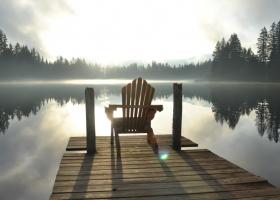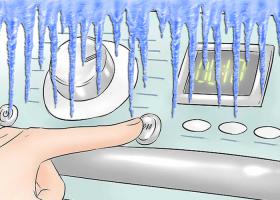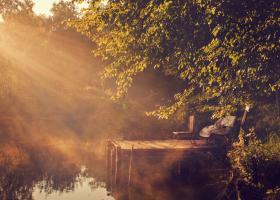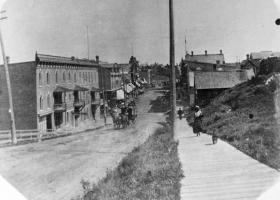Shore Road Allowance, What is it?
In many parts of Ontario, from Georgian Bay to east of the Ottawa River, surveyors of Crown land in the late 19th century were instructed to lay out a 66-foot (actually they called it a "Chain" which is an old British measurement, and 1 chain = 100 links = 66 feet = 20.1168 meters) strip of land for commercial road allowances along the banks of lakes and rivers.
For several decades after about 1880, these roads were used for logging and transportation of goods. They have little commercial purpose now, but have become critical issues in cottage country real estate transactions, and a good source of income for municipalities in Cottage Country.
The shore road allowance lies between the cottage property and the river or lake it faces. If this road allowance exists, even if it is only on paper, you will not own to the water's edge of the property unless title to the roadway has been purchased.
Since the road exists legally on paper, the beach could be a road that can be freely enjoyed by members of the public, including snowmobilers and ATV users.
There are many instances where the boathouse, dock or even the cottage itself have been built on a shore road allowance which the cottager does not own. Unless the cottager buys the roadway from the municipality or signs a license agreement, the structures are effectively illegal.
This is why it is especially important to obtain a land survey when buying waterfront property, so that the purchasers can determine if anything has been built on land not owned by the cottager.
Buyers and existing owners of Muskoka lakefront property can contact the local municipality to see whether local shore roads are for sale. In some places, called areas of retention, the land is not for sale.
Policies and more information of Different Municipalities in Muskoka check the following links:
As well, the owners will have to obtain a reference plan of survey from an Ontario land surveyor, in order to record the exact location of the land being purchased. Other costs will include the municipality's legal fees and application fee, the buyer's legal fees, and the costs of a bylaw and site plan agreement if they are required. The entire process can take between six months and a year.
Another alternative is to obtain a license of occupation from the local government at an annual cost of $500 to $1,000 a year. While it may allow a private dock or boathouse to remain on public land, the permit may be terminated at any time, and it will not prevent public access to the shoreline property.
If you're in the market for a cottage fronting on a Muskoka lake or river, make sure you have knowledgeable professionals on your side. And make sure that the purchase agreement deals with the shoreline road issue.
Can the shore road allowance be purchased?
The Ministry of Natural Resources (MNR) must agree to the disposal of shore road allowances, as must the township or town's council, as well as adjoining neighbors' in both directions. In most cases the MNR and the town(ship) they will agree, however this is not always the case. The MNR is concerned about the development of the shore road allowances and the removal of submersed trees and weedy areas which make good spawning areas for fish. If you do or do not own the original shore road allowance it is recommended to contact the town or township office where the property is located to find out specific answers to your particular case. There is no standard fee for this land as each town(ship) has the right to set their own price - and they normally charge a price per square foot. The applicant is responsible for all costs associated with the purchase including surveys, application fees, town legal fees, your legal fees etc.
If I own the shore road allowance can I do whatever I want with it?
Lake quality is important to the MNR as well as the other lake owners on your lake. Fishing habitat is important to the MNR as it is with the department of Fisheries and Oceans, so all shoreline work has to be with their approval as well as the town(ship). Townships will also have restrictions on how close to the lake you can build, they may have a permit requirement for docks and boathouses, so you must check with them for guidelines as well as the MNR, and in some cases, the Ministry of Oceans and Fisheries.
If I do not own the Shore Road Allowance can I do whatever I want on it?
Another great question. NO you cannot. You do not own that land, although most people do, it is not their land to do so. You must contact the Municipality and the MNR before you work on lands you do not own. In a lot of cases they will allow you to remove some trees and perhaps install a beach, however it is their land, not yours. Even IF YOU DO own the land, the town(ship) and MNR may also have restrictions on how many trees to cut and how close to the lake you can build and a permitted beach front you are allowed for removal of lakefront trees. The concern is always for the lake environment and leaching into the water. You should always contact the municipality and the MNR (Ministry of Natural Resources) for their policies. In some cases, the Department of Oceans and Fisheries may also have to be contacted (the MNR will normally know this)












